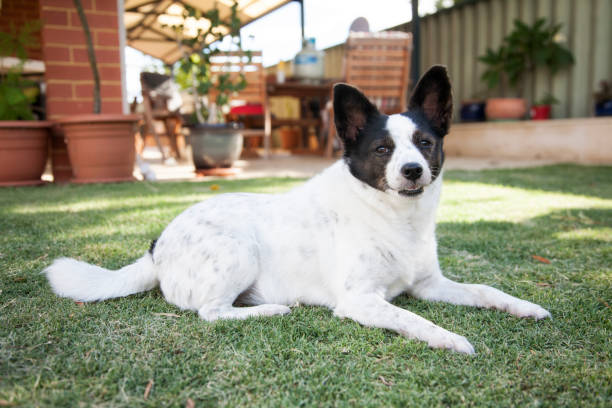What are Dingoes?
This post contains affiliate links. This means I will make a commission at no extra cost to you should you click through and make a purchase. Read the full disclosure here.
Australia’s vast and diverse landscapes are home to a wide array of unique and fascinating wildlife, and among its native inhabitants is the dingo. Often shrouded in mystery and misunderstanding, dingoes are wild canines that play a crucial role in the ecological balance of the continent. In this blog post, we will delve into the world of dingoes, exploring their origins, physical characteristics, behaviors, and the intricate relationship they share with both the environment and humans.
Dingoes have long captured the imagination of people around the world, yet their significance in the Australian ecosystem is not always fully appreciated. As we unravel the layers of their existence, we aim to shed light on the essential role dingoes play in maintaining the delicate equilibrium of Australia’s unique biodiversity.
Join us on this journey of discovery as we seek to answer the fundamental question: What are dingoes, and why are they such a vital part of Australia’s natural tapestry?
Origins and Evolution

Historical Background of Dingoes
The story of dingoes traces back through the annals of time, intertwined with the rich history of Australia and its Indigenous peoples. Believed to have arrived on the continent around 4,000 years ago, dingoes are thought to be descendants of domestic dogs brought by seafaring Southeast Asian traders or explorers. This historical connection between dingoes and humans has left an indelible mark on the cultural tapestry of Australia.
Evolutionary Journey and Classification
While dingoes share some similarities with domestic dogs, they have evolved in isolation on the Australian continent, adapting to its diverse landscapes. Scientifically classified as Canis lupus dingo, they belong to the family Canidae, making them relatives of other canids like wolves and foxes. Despite their shared ancestry, dingoes have developed distinct traits that set them apart as a unique subspecies.
Unique Features Distinguishing Dingoes from Other Canines
Dingoes exhibit a range of characteristics that distinguish them from both their domestic counterparts and other wild canids. Their medium-sized build, erect ears, and bushy tail are some of the physical traits that make them instantly recognizable. Additionally, dingoes boast a coat that can vary in color from sandy yellow to red ginger, providing effective camouflage in the diverse Australian landscapes.
As we explore the evolutionary journey of dingoes, it becomes clear that their adaptation to the Australian environment has been a key factor in their survival and continued existence. In the next section, we will delve deeper into the physical characteristics that make dingoes uniquely suited to their surroundings.
Physical Characteristics
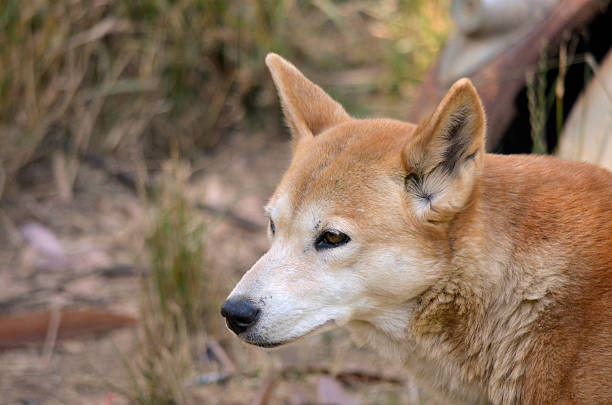
Dingo Size, Weight, and Body Structure
Dingoes are characterized by their medium-sized and athletic build, well-suited for the challenges of the Australian wilderness. On average, adult dingoes stand about 20 to 25 inches (51 to 63 cm) tall at the shoulder and weigh between 22 to 33 pounds (10 to 15 kg). This compact size enables them to navigate diverse terrains, from dense forests to arid deserts, with agility and efficiency.
Coat Color and Texture
One of the striking features of dingoes is their coat, which can vary in color and texture. The most common coat colors include sandy yellow, red ginger, and light tan, providing effective camouflage in the varied landscapes they inhabit. The coat is typically short and dense, with a coarse texture that helps protect them from the elements. This adaptation is not only crucial for their survival but also contributes to their ability to blend seamlessly into their surroundings while hunting or avoiding predators.
Notable Facial Features
Dingoes are known for their distinct facial features that set them apart from other canines. Their pointed, erect ears enhance their sense of hearing, allowing them to detect prey or potential threats from a distance. Additionally, dingoes have a relatively broad head with a well-defined muzzle, equipped with sharp teeth adapted for both hunting and scavenging. Their almond-shaped eyes, often amber or light brown, contribute to their keen eyesight, a valuable asset in the wild.
Understanding the physical characteristics of dingoes provides insight into their evolutionary adaptations, allowing them to thrive in the diverse ecosystems of Australia. In the following sections, we will delve deeper into their habitat, behavior, and the crucial role they play in maintaining ecological balance.
Habitat and Distribution

Natural Habitats of Dingoes
Dingoes have displayed remarkable adaptability to a wide range of Australian environments, making them one of the continent’s most widespread terrestrial mammals. Their natural habitats include grasslands, deserts, forests, and coastal areas. This adaptability has allowed dingoes to thrive in diverse conditions, from the scorching heat of the Outback to the lush vegetation of the tropical north.
Geographic Distribution in Australia
The distribution of dingoes spans across the entire Australian continent, emphasizing their ability to navigate and inhabit various landscapes. While they are found in abundance in less populated areas, dingoes have also adapted to human-altered environments, including rural and peri-urban areas. Understanding their distribution is crucial for appreciating the role they play in different ecosystems and the challenges they face in regions with increased human activity.
Adaptations to Different Environments
The adaptability of dingoes is evident in their capacity to thrive in different ecosystems. In arid regions, they are known to rely on their efficient water conservation abilities, while in forested areas, their agility and hunting prowess come to the forefront. Dingoes have evolved to coexist with the unique challenges presented by each environment, showcasing their resilience in the face of diverse ecological conditions.
As we explore the habitats and distribution of dingoes, it becomes evident that their survival is intricately linked to the vast and varied Australian landscape. In the upcoming sections, we will delve into the behavior and social structure of dingoes, unraveling the complexities of their interactions within their ecosystems.
Behavior and Social Structure
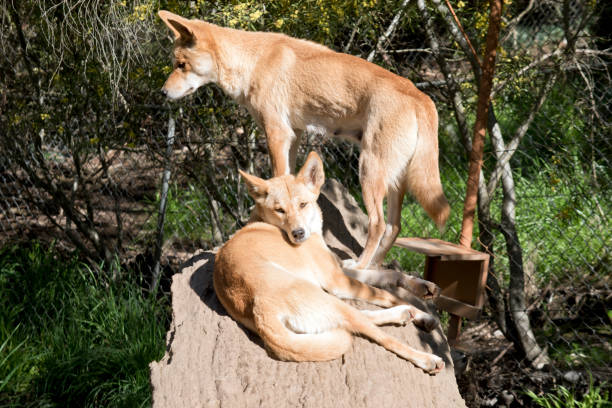
Hunting and Feeding Habits
Dingoes are skilled and opportunistic hunters, showcasing a diverse diet that includes small mammals, birds, and even larger prey such as kangaroos. Their hunting strategy often involves cooperation within packs, enhancing their chances of success in capturing prey. Dingoes are also scavengers, making use of their keen sense of smell to locate carrion or leftover kills from other predators.
The hunting behavior of dingoes is not only a survival strategy but also plays a crucial role in shaping the dynamics of their ecosystems. By preying on certain species, they help regulate population numbers and contribute to the overall health of the ecosystem.
Pack Structure and Social Organization
Dingoes exhibit a social structure centered around packs, typically consisting of a monogamous breeding pair and their offspring. The pack structure is essential for cooperative hunting, territory defense, and raising offspring. Packs vary in size, with larger packs often observed in areas with abundant resources.
Social organization within dingo packs involves a hierarchy, with the breeding pair usually assuming dominant roles. This hierarchical structure contributes to efficient decision-making within the pack and helps maintain stability. Dingoes are known for their strong family bonds, and cooperative behavior is evident not only in hunting but also in caring for the young.
Communication Methods Among Dingoes
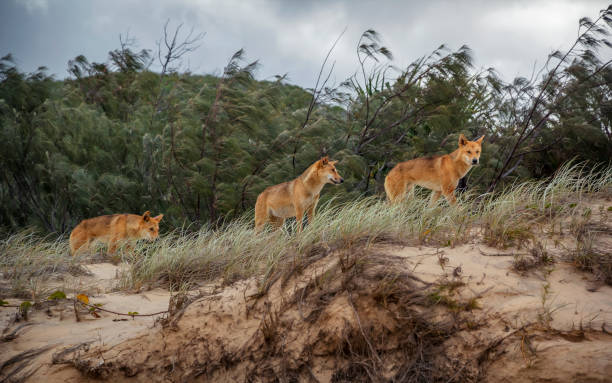
Communication is integral to the social dynamics of dingoes. They employ a variety of vocalizations, including howls, barks, and growls, to convey information to pack members and establish territory boundaries. Vocalizations are particularly crucial during the breeding season when individuals communicate to attract mates.
In addition to vocal communication, dingoes use body language, such as tail posture and ear position, to convey messages within the pack. Understanding these communication methods provides valuable insights into the intricate social lives of dingoes and their ability to cooperate within a pack structure.
As we delve into the behavior and social structure of dingoes, it becomes clear that their interactions are not only fascinating but also integral to their survival and the ecological balance of their habitats. In the following sections, we will explore the relationship between dingoes and humans, addressing historical interactions and contemporary challenges.
Relationship with Humans

Historical Interactions with Indigenous Australians
Dingoes hold a significant place in the cultural history of Australia, particularly among Indigenous communities. The relationship between dingoes and Indigenous Australians dates back thousands of years, with dingoes often depicted in traditional art and mythology. Some Indigenous groups view dingoes as companions and helpers in hunting, while others incorporate them into Dreamtime stories, attributing spiritual significance to these wild canines.
The symbiotic relationship between dingoes and Indigenous Australians is deeply rooted in mutual respect and understanding. Dingoes played a role in controlling populations of introduced species, contributing to the delicate balance of Australia’s ecosystems.
Contemporary Challenges and Conflicts
In modern times, however, the relationship between dingoes and humans has become more complex. Conflicts have arisen, particularly in rural and agricultural areas, where dingoes may come into contact with livestock. The predation of livestock has led to negative perceptions and increased efforts to control dingo populations.
Dingoes also face threats from habitat loss, vehicle collisions, and disease. The encroachment of human activities into their natural habitats poses challenges to their survival, highlighting the need for effective conservation measures.
Conservation Efforts and the Importance of Coexistence
Conservation initiatives seek to address the challenges faced by dingoes while promoting coexistence with human communities. Understanding the ecological role of dingoes in maintaining biodiversity is crucial for developing sustainable conservation strategies. Efforts focus on education, habitat protection, and the implementation of responsible dingo management practices to mitigate conflicts.
Preserving the balance between dingoes and humans is not only essential for the well-being of these wild canines but also for the overall health of Australia’s ecosystems. As we explore the historical and contemporary dimensions of the dingo-human relationship, it becomes evident that fostering understanding and cooperation is key to ensuring a harmonious coexistence between these wild canines and the communities they inhabit.
In the next section, we will address common myths and misconceptions surrounding dingoes, aiming to dispel inaccuracies and foster a more accurate understanding of these fascinating creatures.
Myths and Misconceptions
Dingoes have long been the subject of various myths and misconceptions, contributing to both their enigmatic reputation and, at times, to misunderstandings about their behavior and role in ecosystems. It’s essential to debunk these misconceptions to foster a more accurate understanding of dingoes and their significance in the Australian landscape.
Common Myths about Dingoes
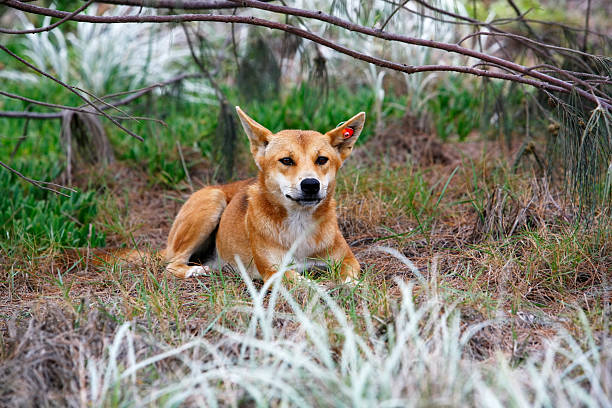
Dingoes as “Wild Dogs”
One common misconception is the labeling of dingoes as “wild dogs.” While they share a common ancestry with domestic dogs, dingoes have distinct traits and behaviors that differentiate them. Referring to dingoes simply as wild dogs oversimplifies their ecological role and evolutionary history.
Perceived Threat to Livestock
Dingoes are often unfairly scapegoated for livestock predation. While some instances of predation do occur, research indicates that the impact of dingoes on livestock is more nuanced than commonly portrayed. Misattributing all livestock losses to dingoes oversimplifies the complex interactions between wild canines and agricultural practices.
Danger to Humans
Another misconception is the perceived danger of dingoes to humans. Instances of dingo attacks on humans are extremely rare, and when they do occur, they are often associated with human interaction, particularly when dingoes are fed or habituated to human presence. Dingoes, in their natural state, generally avoid human contact.
Debunking Myths Surrounding Behavior and Impact
Understanding the nuanced behaviors of dingoes is crucial for dispelling myths and fostering coexistence. Dingoes play a vital role in maintaining ecological balance by controlling prey populations, which, in turn, helps preserve the diversity of plant and animal species. Recognizing the ecological importance of dingoes is key to debunking myths that paint them solely as pests or threats.
As we unravel the truth behind common misconceptions, it becomes evident that a more informed perspective is necessary for promoting conservation efforts and responsible management of dingo populations. In the subsequent section, we will delve into the legal status of dingoes in Australia and explore ongoing conservation initiatives aimed at protecting these iconic wild canines.
Legal Status and Conservation

Legal Protection and Status in Australia
The legal status of dingoes in Australia is a complex and evolving aspect of their conservation. Dingoes are currently recognized as native wildlife in some Australian states, affording them protection under wildlife conservation laws. However, in other regions, they may be classified as pests, particularly in areas where conflicts with livestock are more prevalent.
The varying legal classifications highlight the challenges in creating a unified approach to dingo conservation across the country. Recognizing dingoes as native wildlife underscores their ecological importance, emphasizing the need for conservation measures that balance the interests of both dingoes and human communities.
Conservation Initiatives and Challenges
Conservation initiatives for dingoes aim to address the multifaceted challenges they face, including habitat loss, human-wildlife conflicts, and disease. Efforts are underway to establish protected areas, such as national parks and reserves, where dingoes can thrive undisturbed. These initiatives not only safeguard dingo populations but also contribute to the preservation of Australia’s unique ecosystems.
Challenges, however, persist. The intersection of dingo habitats with human activities, including agriculture and urban development, poses ongoing threats. Conservationists work to strike a delicate balance, implementing strategies that protect dingoes while addressing concerns related to livestock and human safety.
Role of Dingoes in Maintaining Ecological Balance
Understanding the ecological role of dingoes is crucial for shaping conservation strategies. As apex predators, dingoes play a key role in regulating prey populations, preventing overgrazing, and maintaining the balance of ecosystems. Their presence contributes to biodiversity by influencing the distribution and behavior of other species, creating a harmonious ecological tapestry.
Recognizing the importance of dingoes in ecological balance underscores the need for comprehensive conservation approaches that consider the interconnectedness of species within their habitats. In the final section of this blog post, we will explore the intricacies of dingo-human conflicts, addressing strategies for mitigating these conflicts and fostering coexistence between dingoes and human communities.
Dingo-Human Conflict
Understanding Conflicts Between Dingoes and Humans
Dingo-human conflicts arise primarily in areas where human activities intersect with dingo habitats. One of the main sources of conflict revolves around livestock predation. Dingoes, being opportunistic hunters, may target domestic animals, leading to economic losses for farmers and ranchers. The perceived threat to livestock has fueled negative attitudes towards dingoes and prompted control measures in some regions.
Mitigation Strategies for Reducing Conflict
Livestock Protection Measures
Implementing effective livestock protection measures is a key strategy for reducing conflicts. This includes the use of guardian animals, secure enclosures, and technologies such as electric fencing. These measures not only protect livestock but also help minimize confrontations between dingoes and humans.
Community Education
Educating communities about dingo behavior, ecology, and the importance of coexistence is crucial. Dispelling myths and promoting a nuanced understanding of dingoes can foster greater tolerance and cooperation. Outreach programs, workshops, and educational campaigns can contribute to building a more informed and supportive community.
Responsible Dingo Management
Instead of resorting to broad-scale culling, which can have unintended consequences on ecosystems, responsible dingo management focuses on targeted approaches. This may involve the relocation of dingoes causing conflicts or the implementation of fertility control measures to manage populations in specific areas.
Habitat Protection and Restoration
Preserving and restoring dingo habitats helps reduce encounters between dingoes and humans. Protected areas and habitat restoration initiatives contribute to creating spaces where dingoes can thrive without coming into direct conflict with human activities.
Balancing Conservation and Human Interests

Balancing the conservation of dingoes with the interests of human communities is a complex but necessary endeavor. Conservation efforts need to be adaptive, considering the dynamic nature of ecosystems and the evolving challenges faced by both dingoes and humans. By integrating scientific research, community engagement, and effective management strategies, it is possible to minimize conflicts and promote the coexistence of dingoes and human communities.
In conclusion, the path forward involves fostering a shared responsibility for the preservation of dingoes and their ecosystems. By implementing sustainable practices and embracing a holistic approach to conservation, we can strive towards a harmonious coexistence between these iconic wild canines and the communities they inhabit.
Final Thoughts
As we conclude our exploration into the world of dingoes, it is evident that these wild canines are integral to the intricate tapestry of Australia’s ecosystems. From their ancient origins and evolutionary adaptations to their unique physical characteristics and complex social structures, dingoes contribute significantly to the biodiversity and ecological balance of the continent.
While dingoes have been the subject of myths and misconceptions, our journey has unveiled the nuanced reality of their behavior and importance. They are not merely “wild dogs” or threats to livestock but play a vital role as apex predators in maintaining the health and diversity of Australia’s natural habitats.
The relationship between dingoes and humans is multifaceted, ranging from historical connections with Indigenous communities to contemporary challenges in agricultural and urban settings. Conservation efforts must navigate this complexity, striving to protect dingoes while addressing legitimate concerns of human communities.
Understanding the legal status of dingoes underscores the need for a unified and adaptive approach to conservation across Australia. By recognizing their role in ecological balance and implementing responsible management strategies, we can create a future where dingoes and humans coexist harmoniously.
In the face of conflicts, mitigation strategies that prioritize education, habitat protection, and responsible management offer a path forward. The goal is not only to preserve dingoes but to foster a broader awareness of the interconnectedness of all species within their ecosystems.
In the spirit of shared responsibility, let us embark on a journey towards a future where dingoes roam free, contributing to the rich biodiversity of Australia while finding ways to peacefully coexist with the communities that call this vast and diverse land home. Through collaboration, understanding, and sustainable practices, we can ensure the continued presence and prosperity of these iconic wild canines for generations to come.







